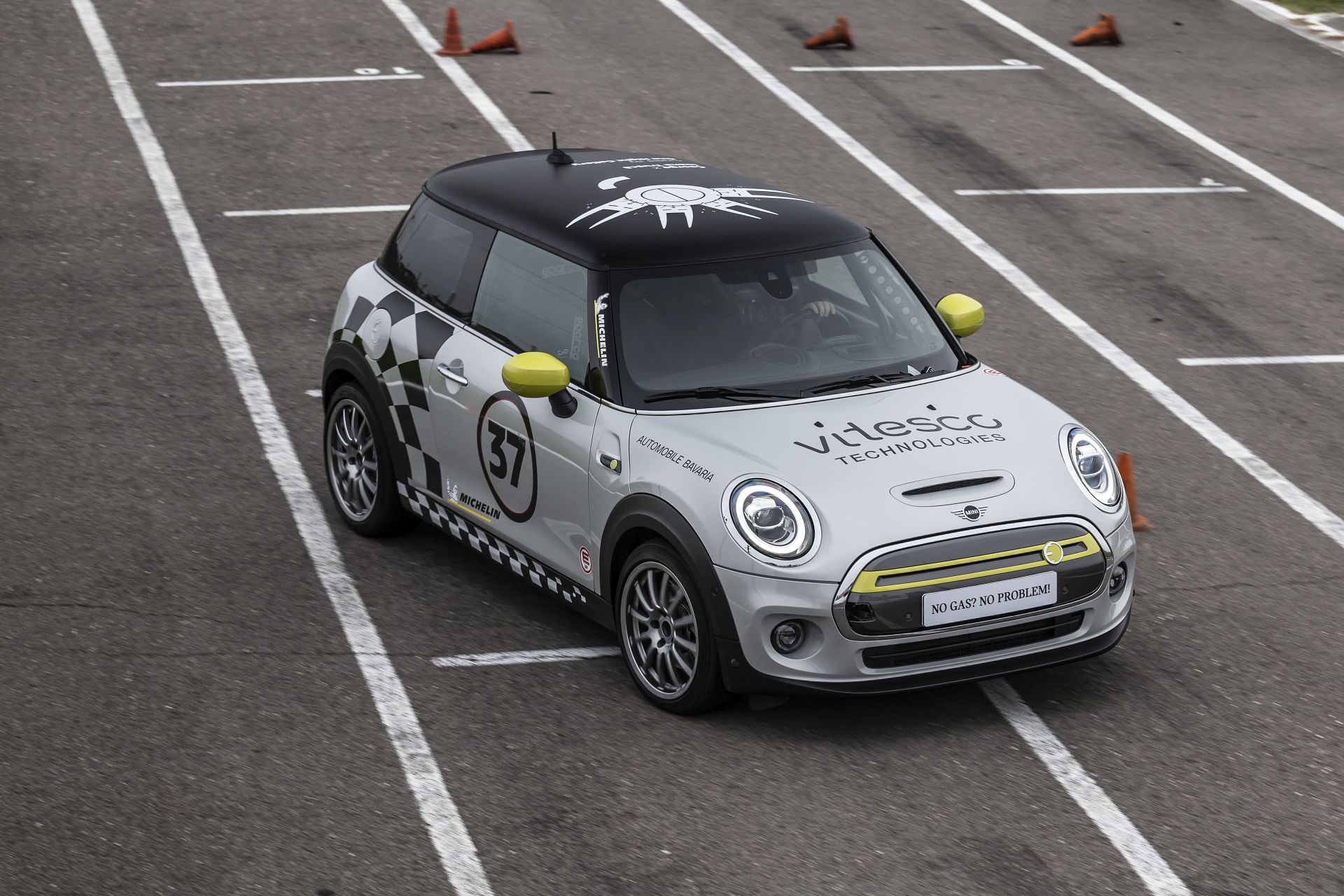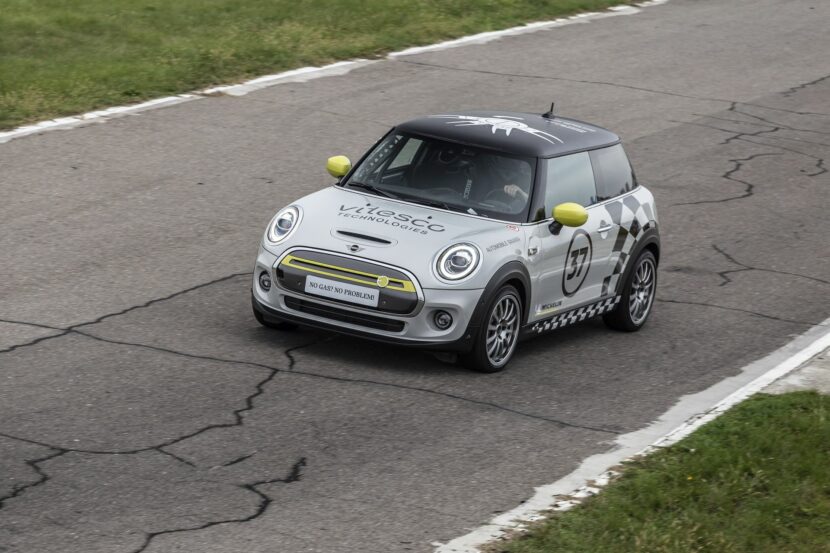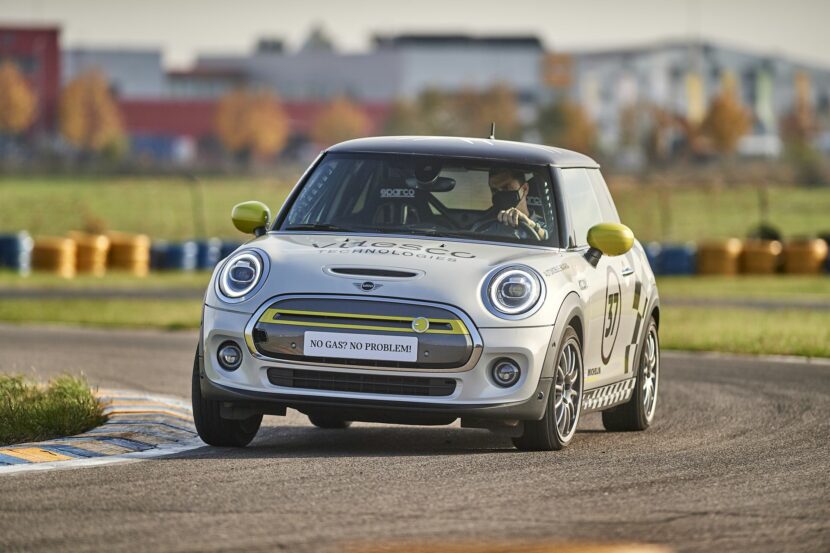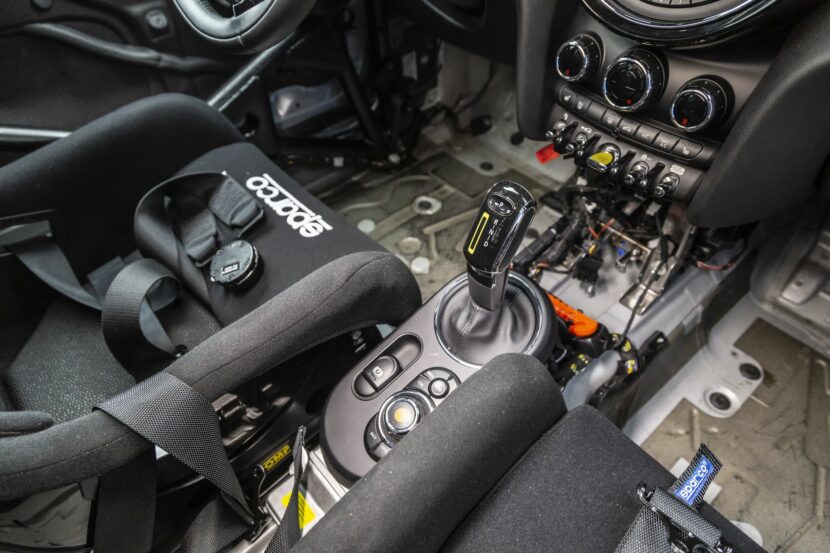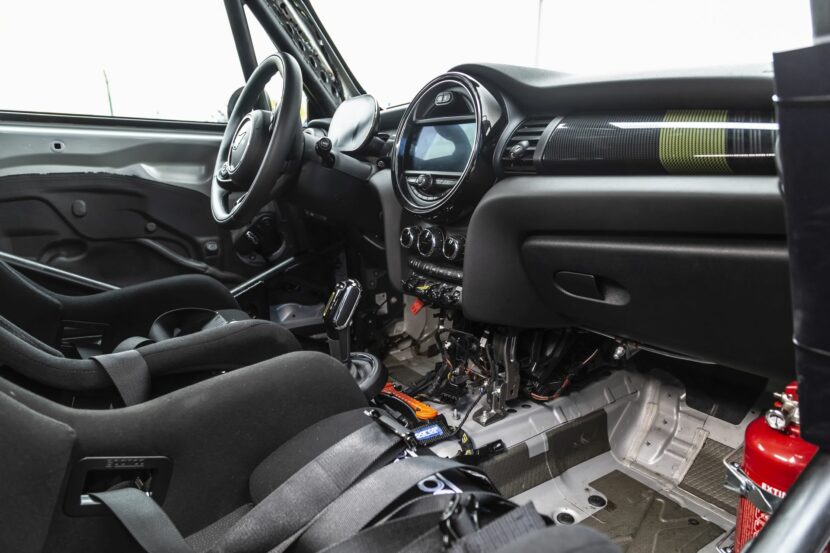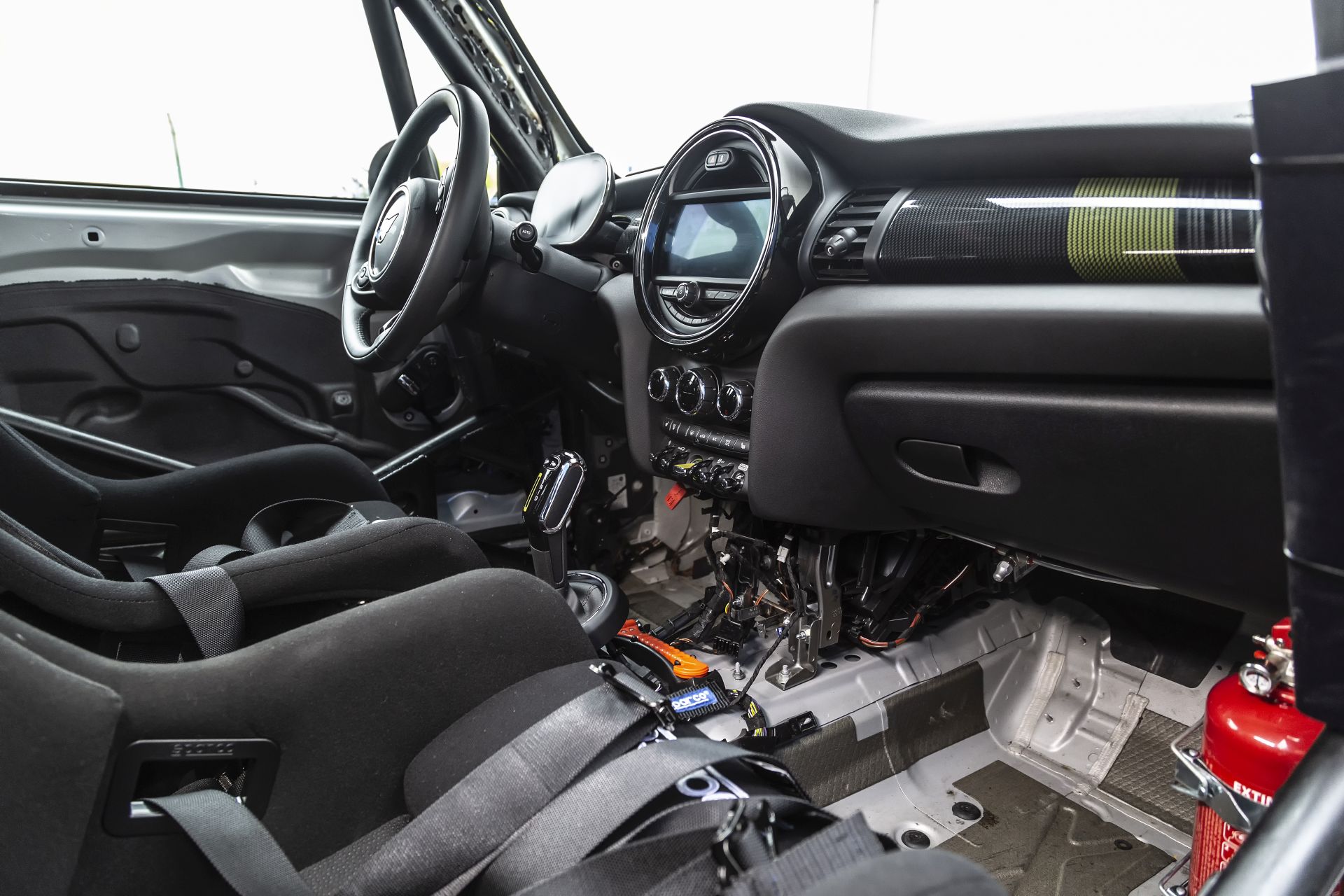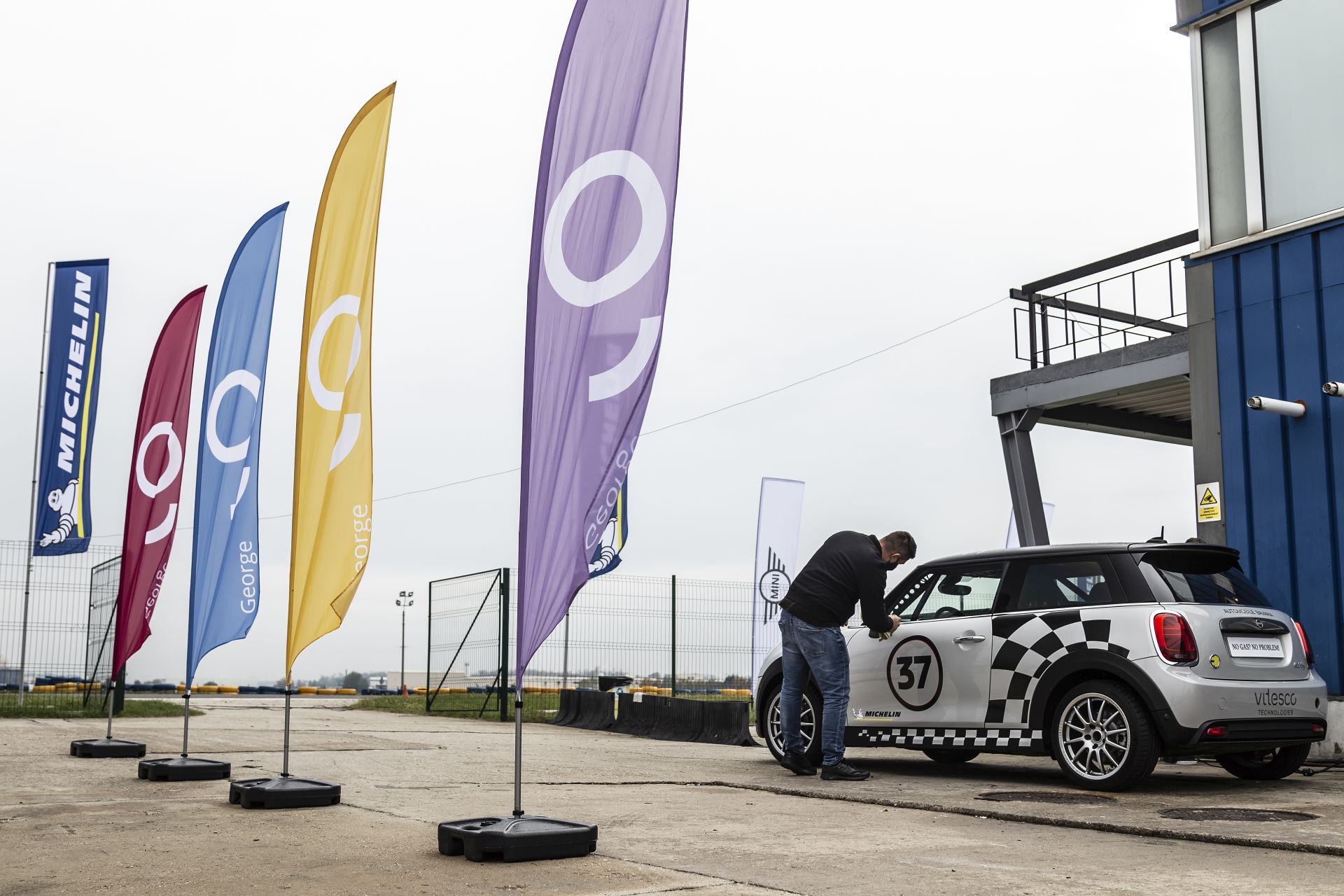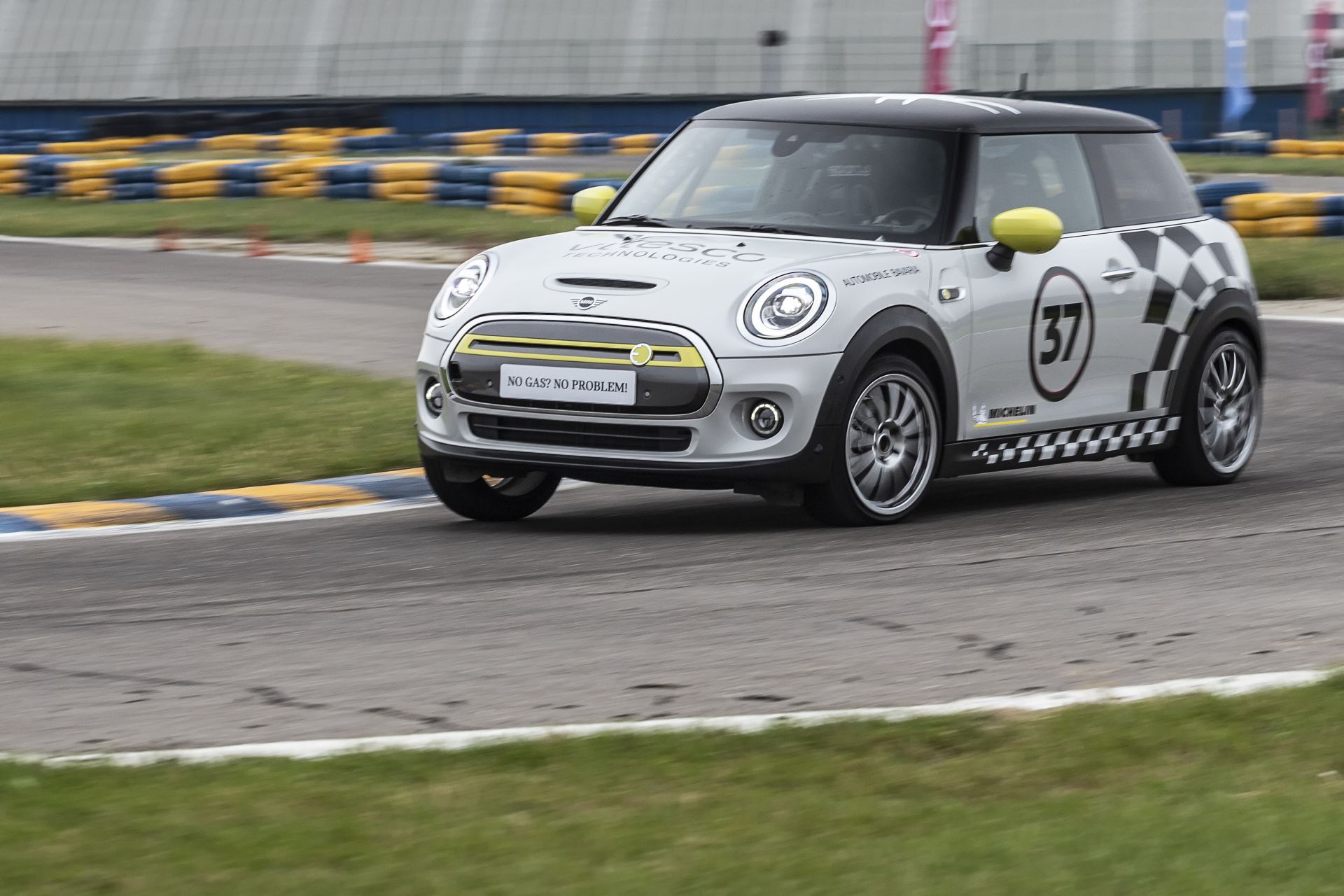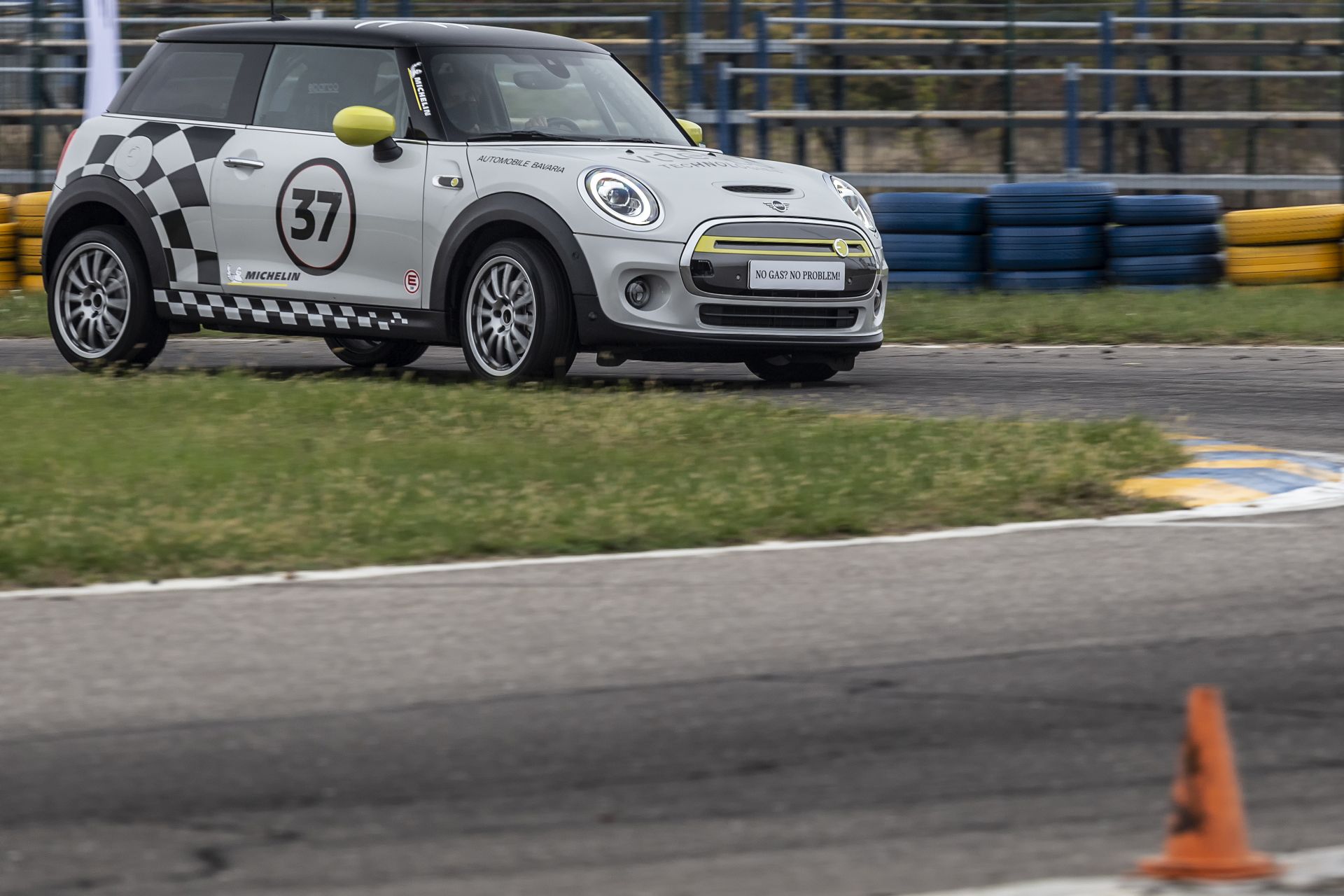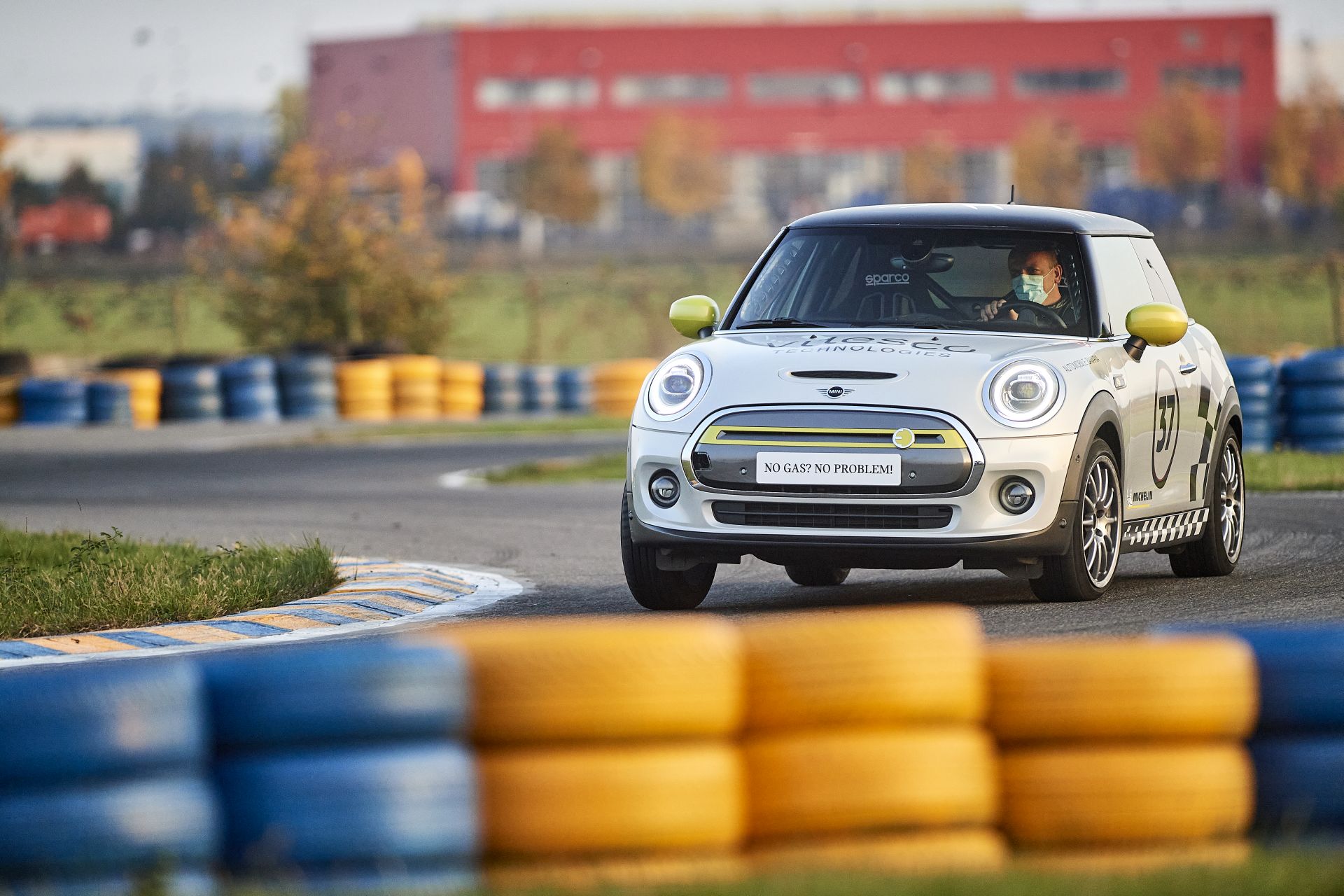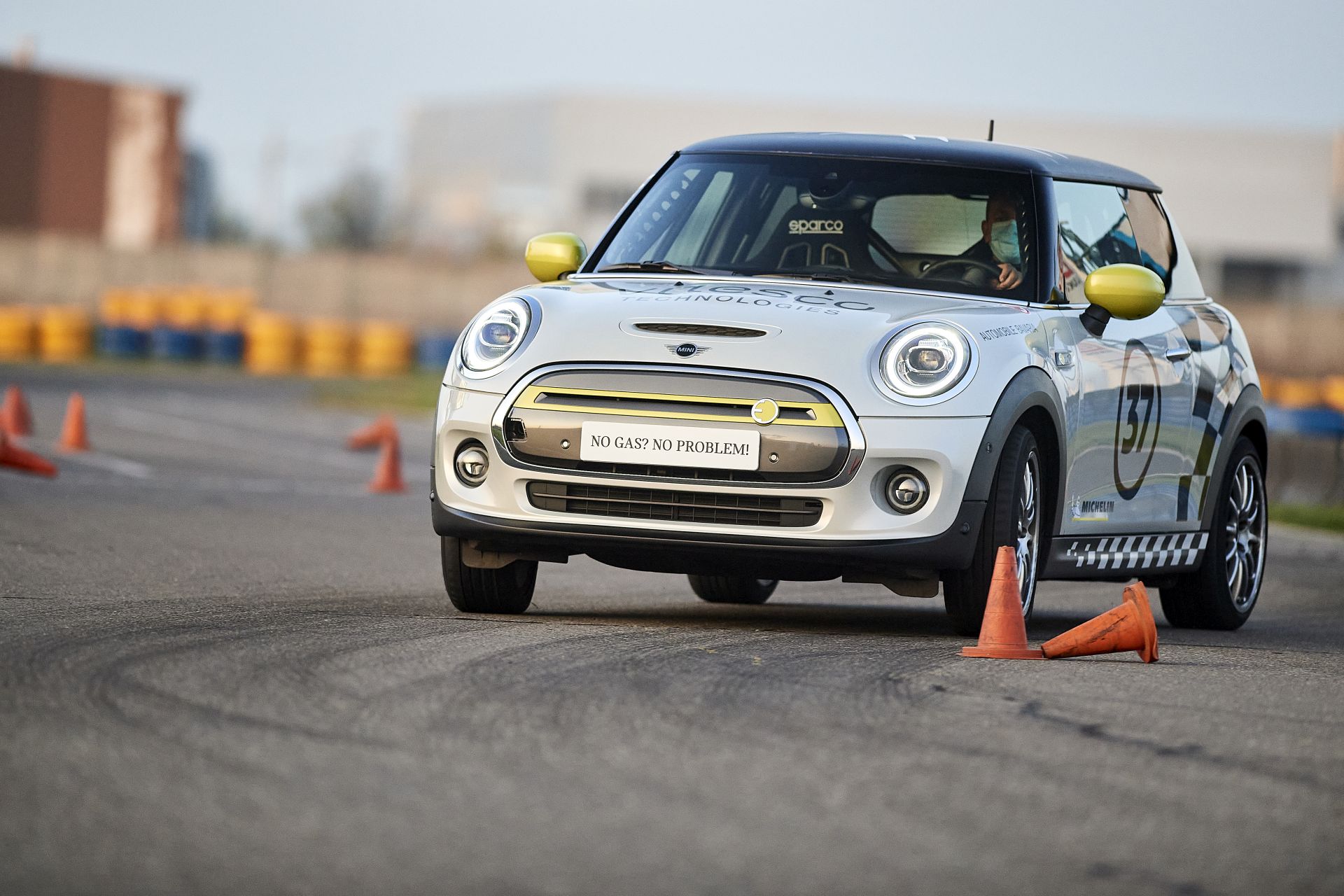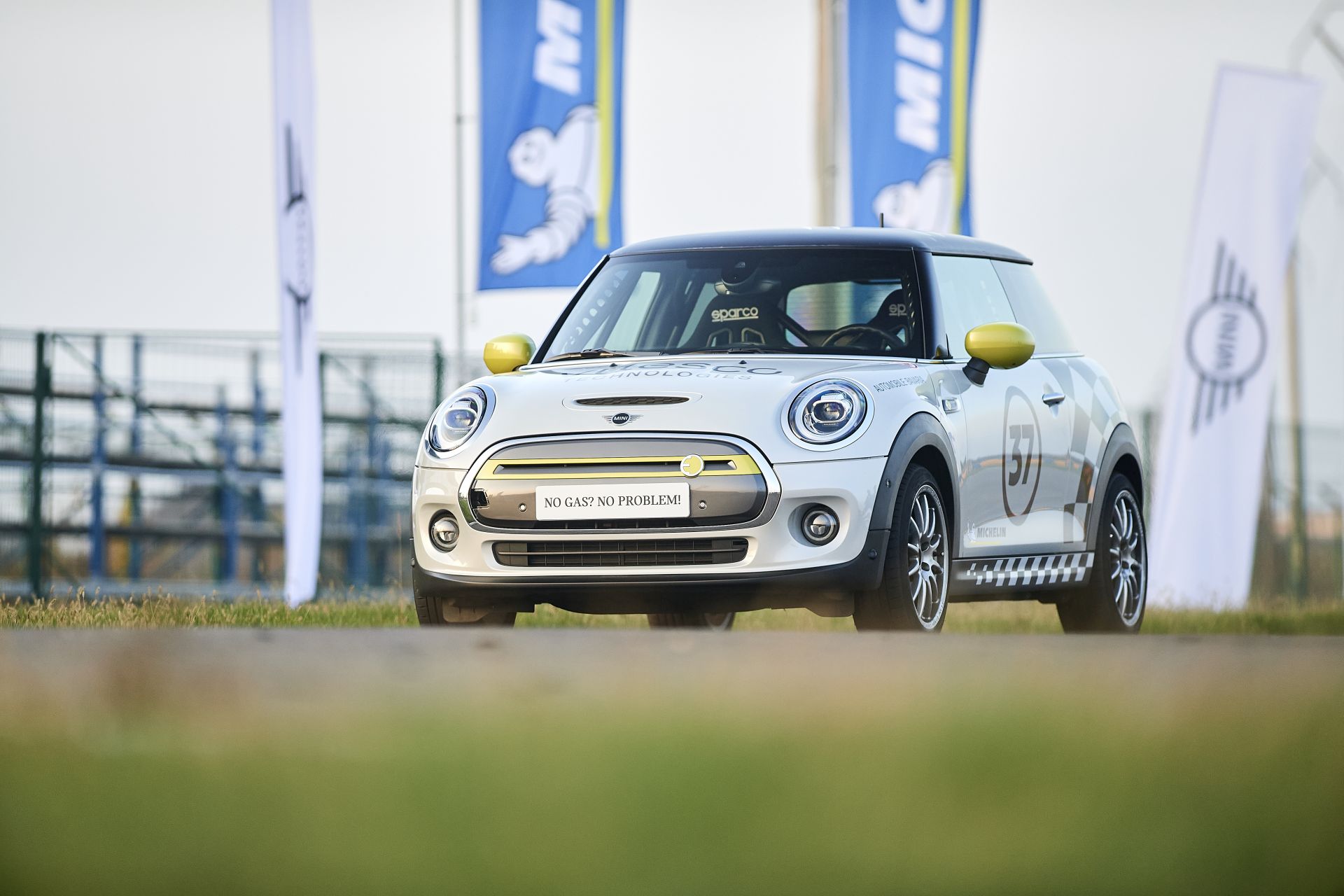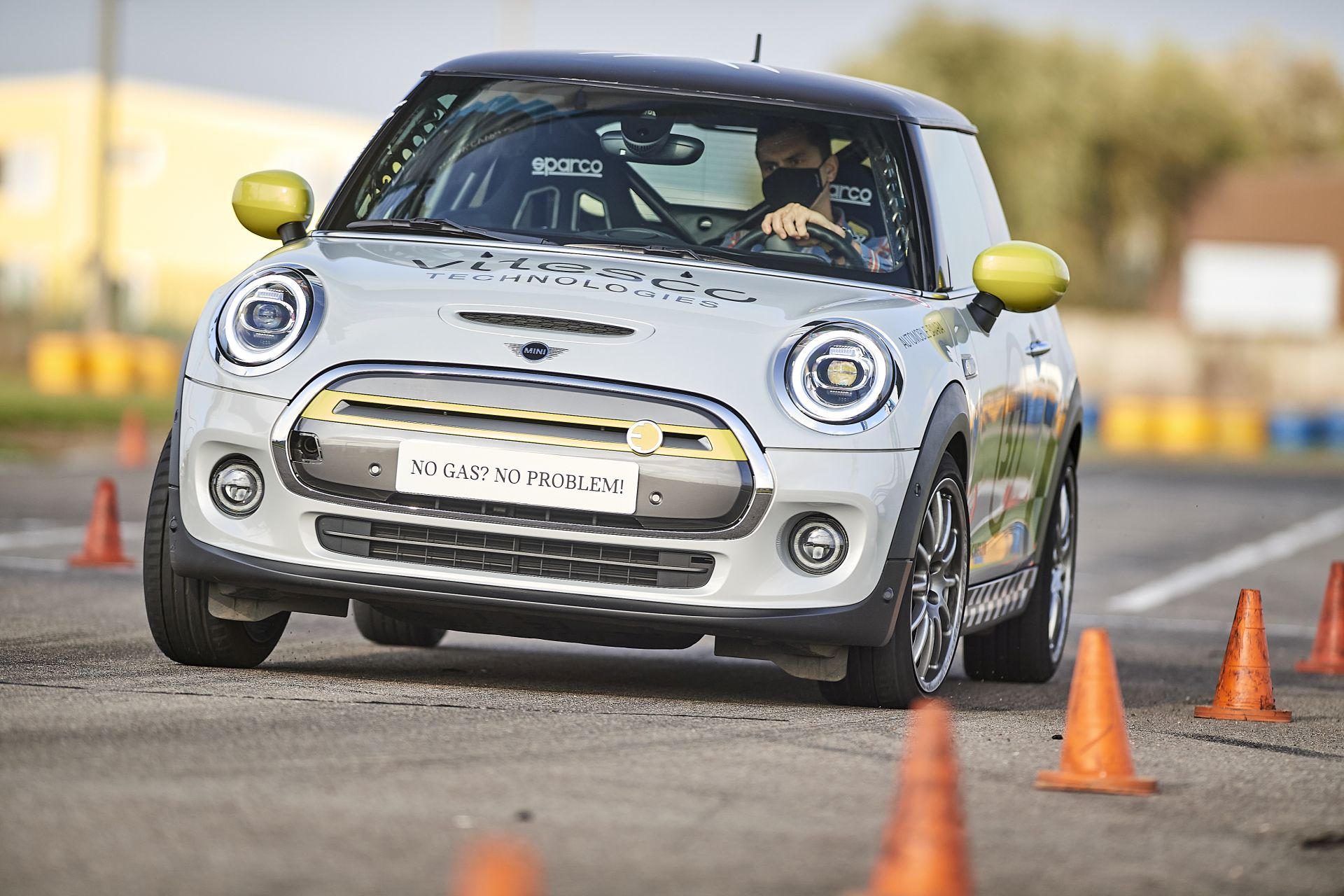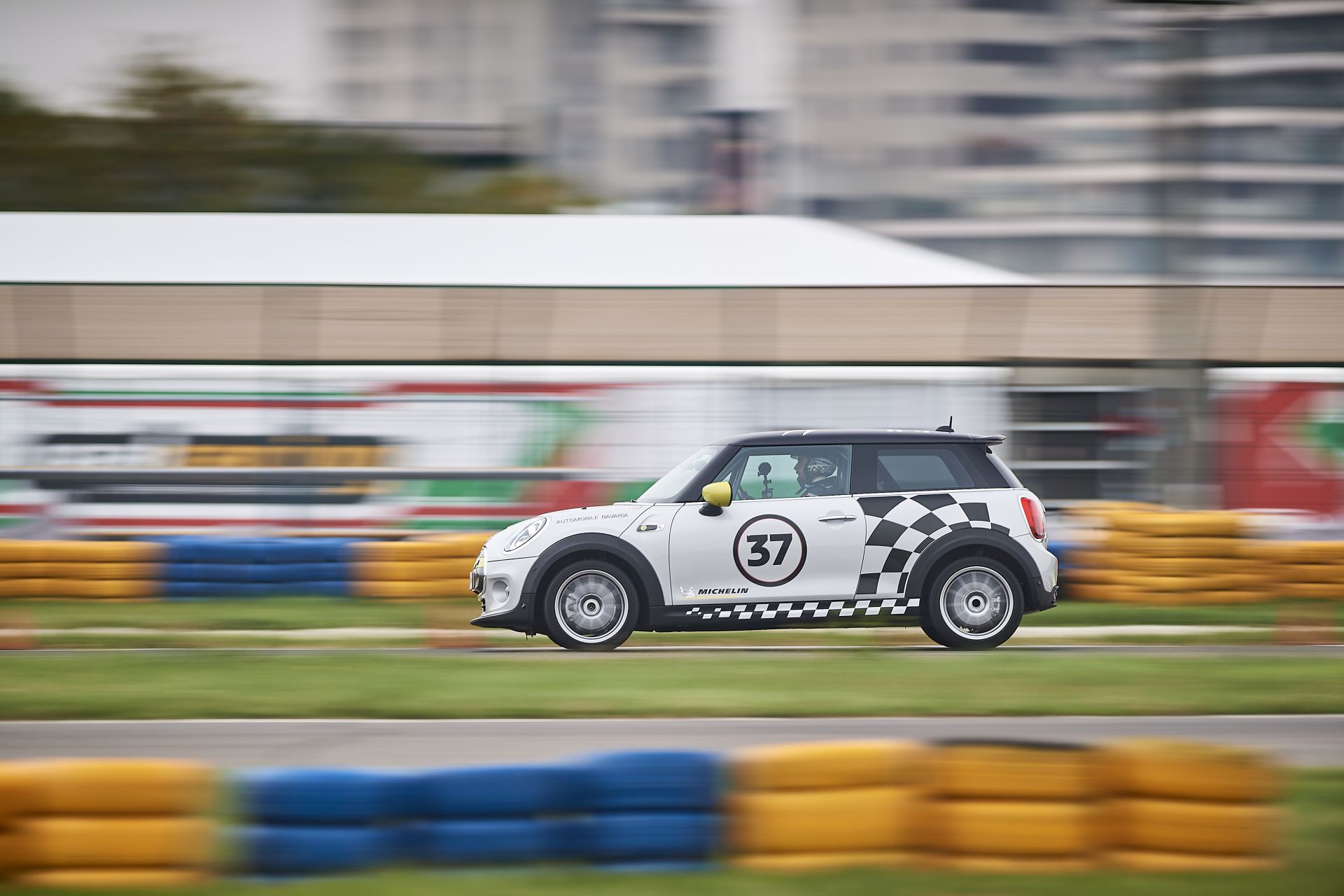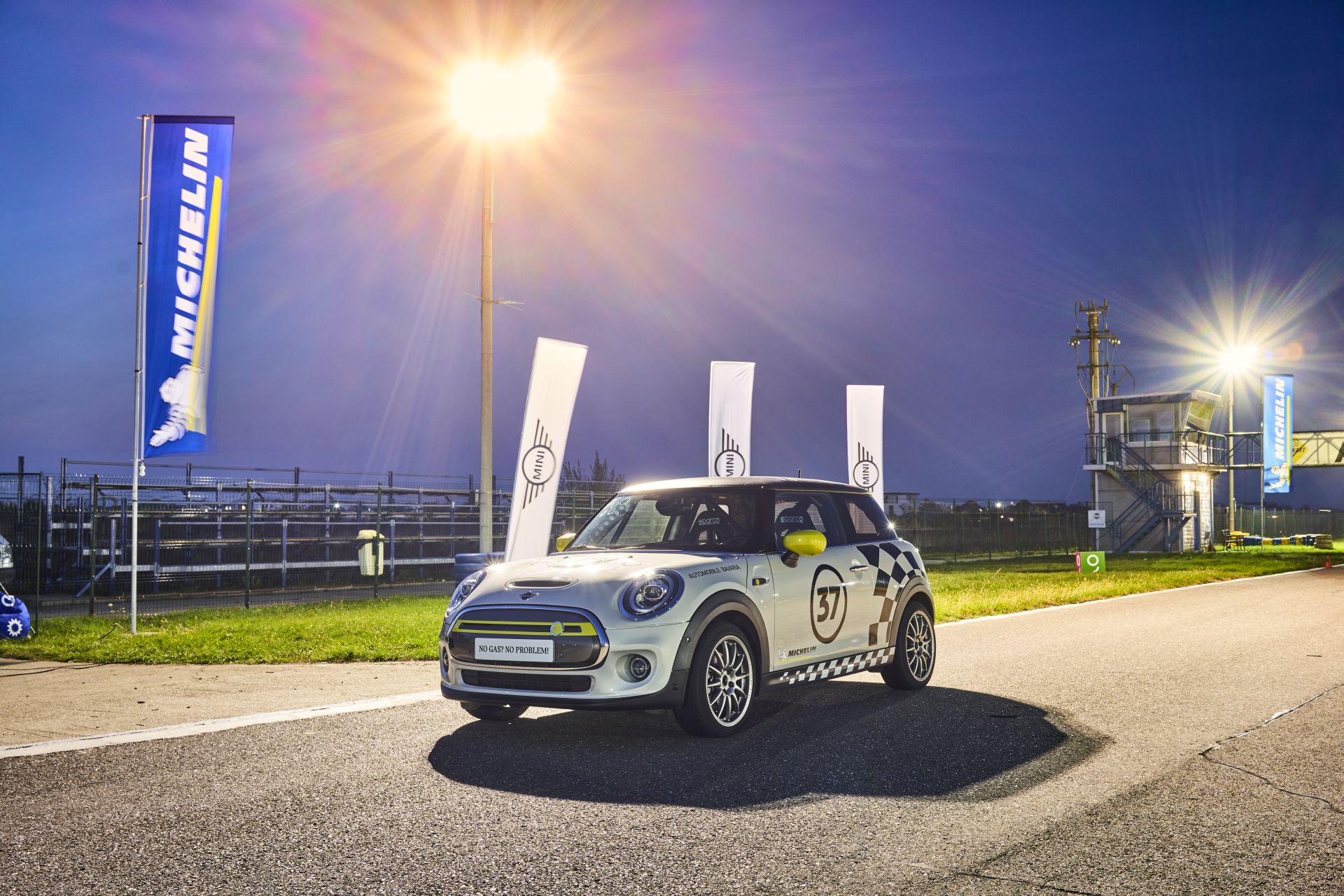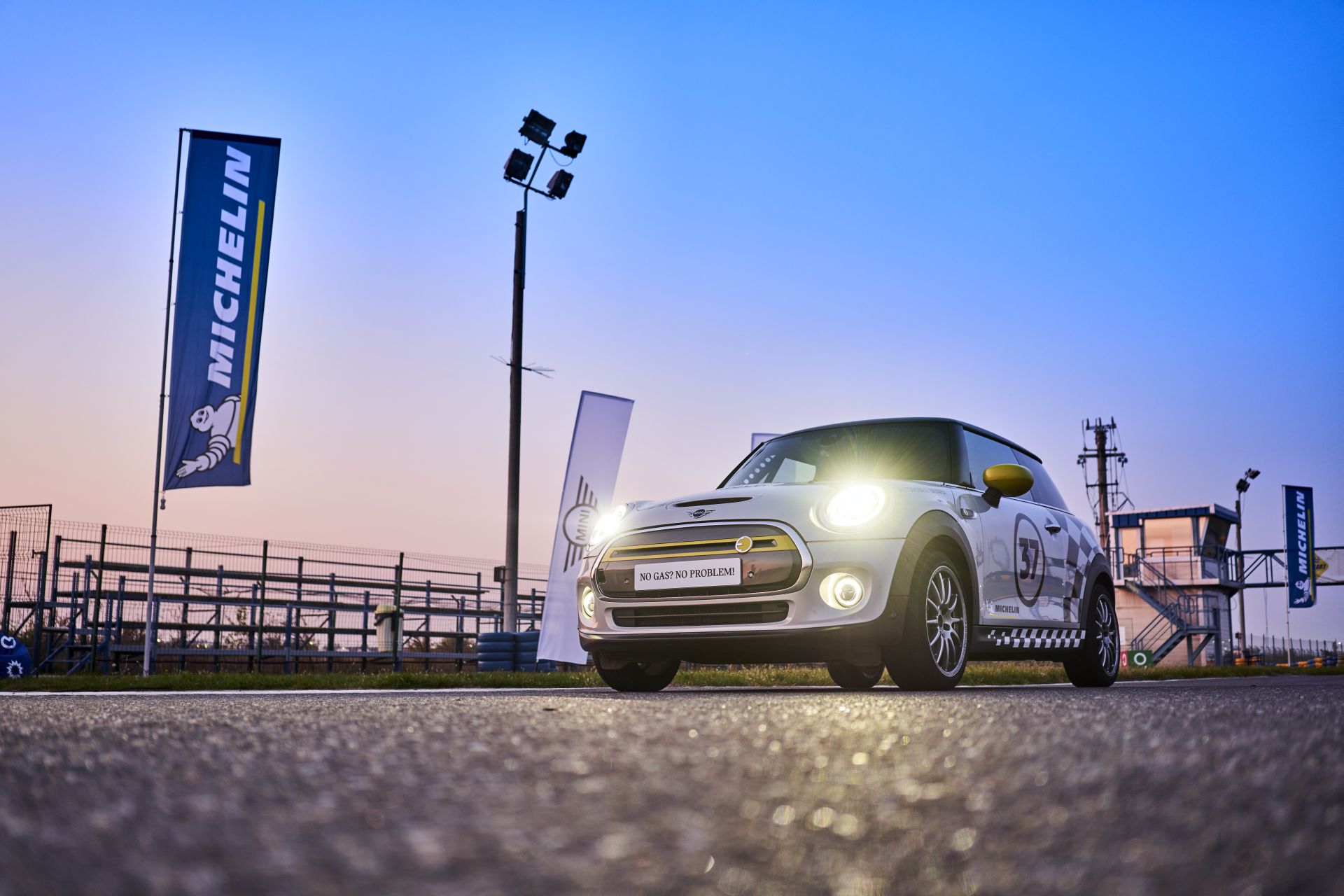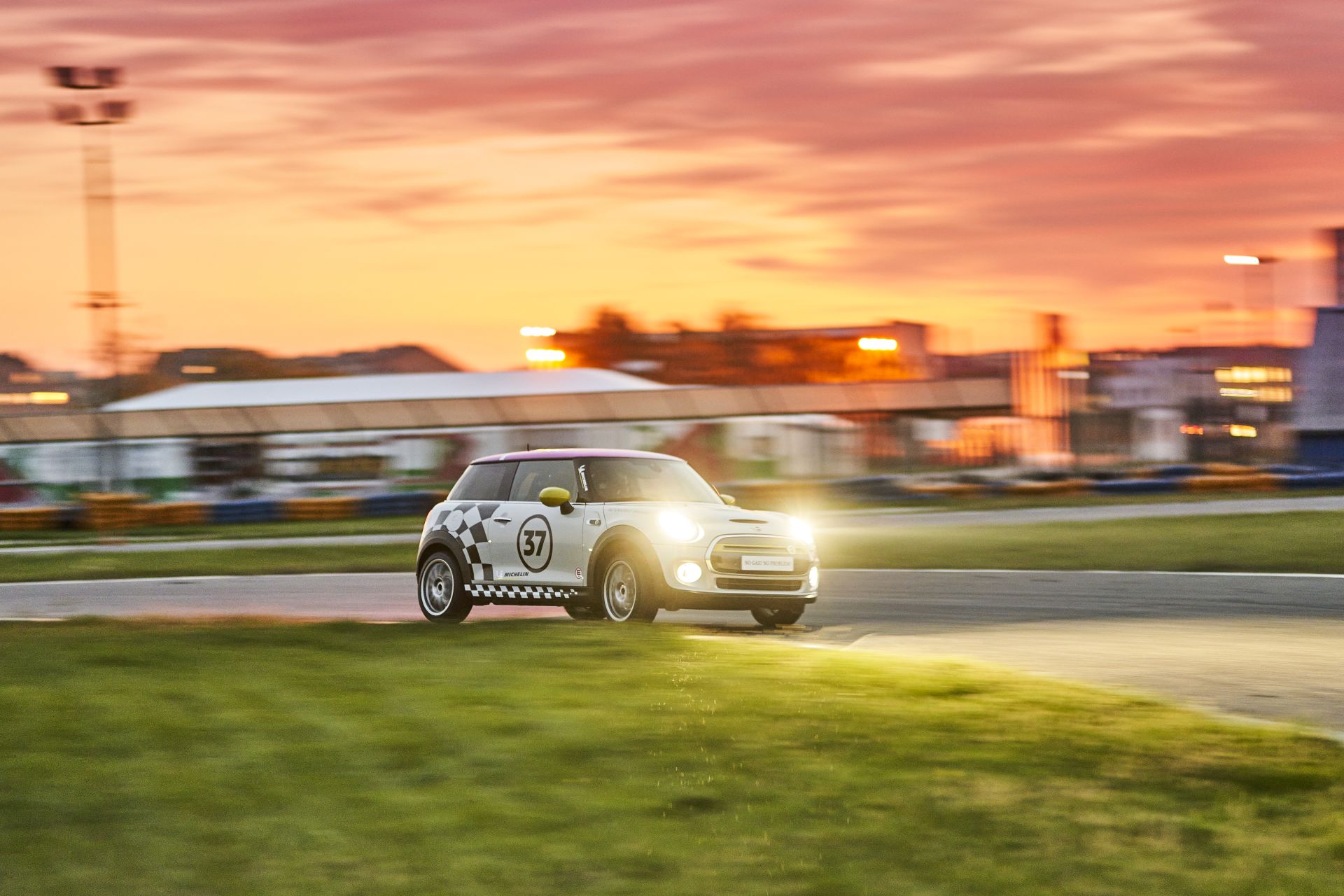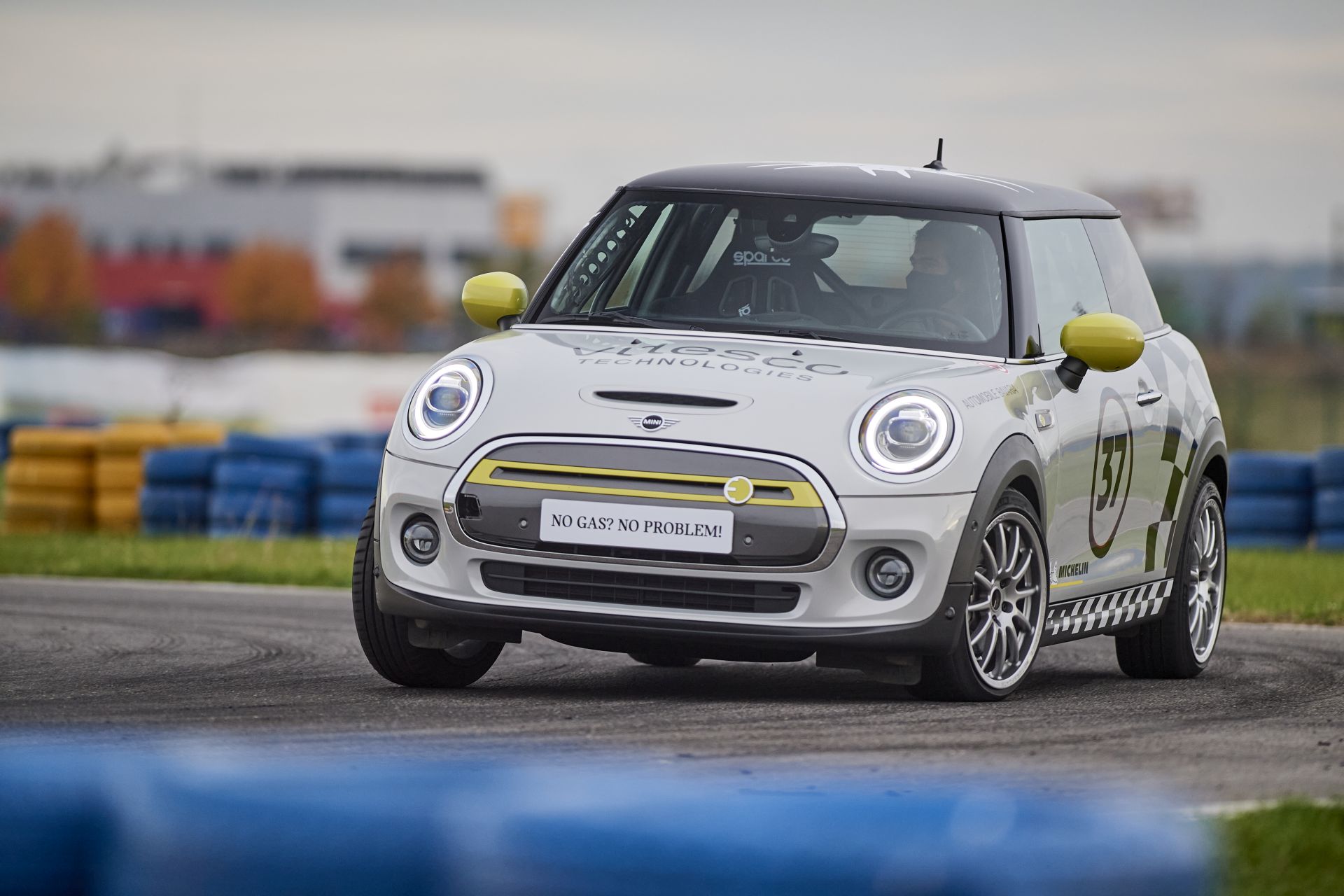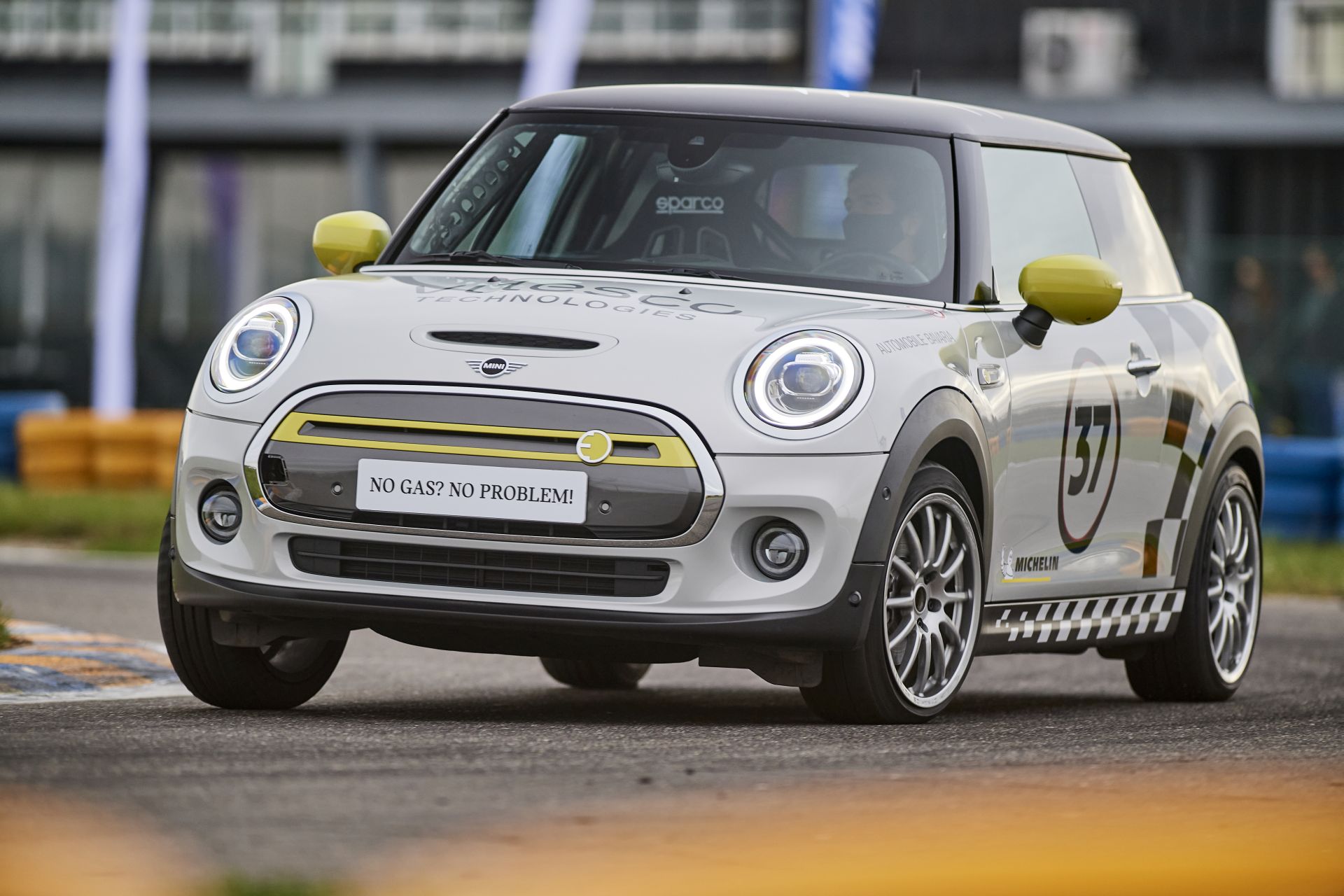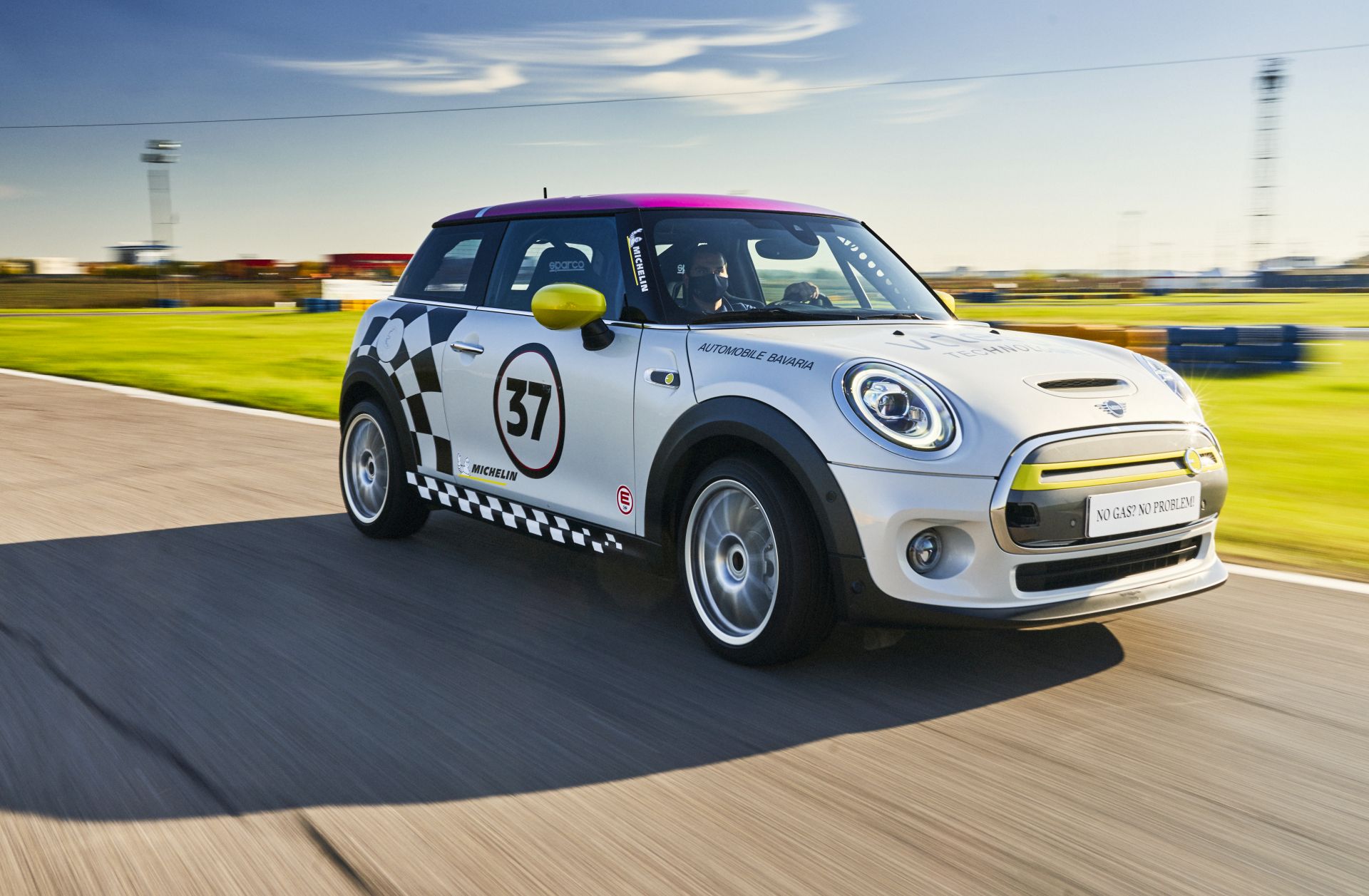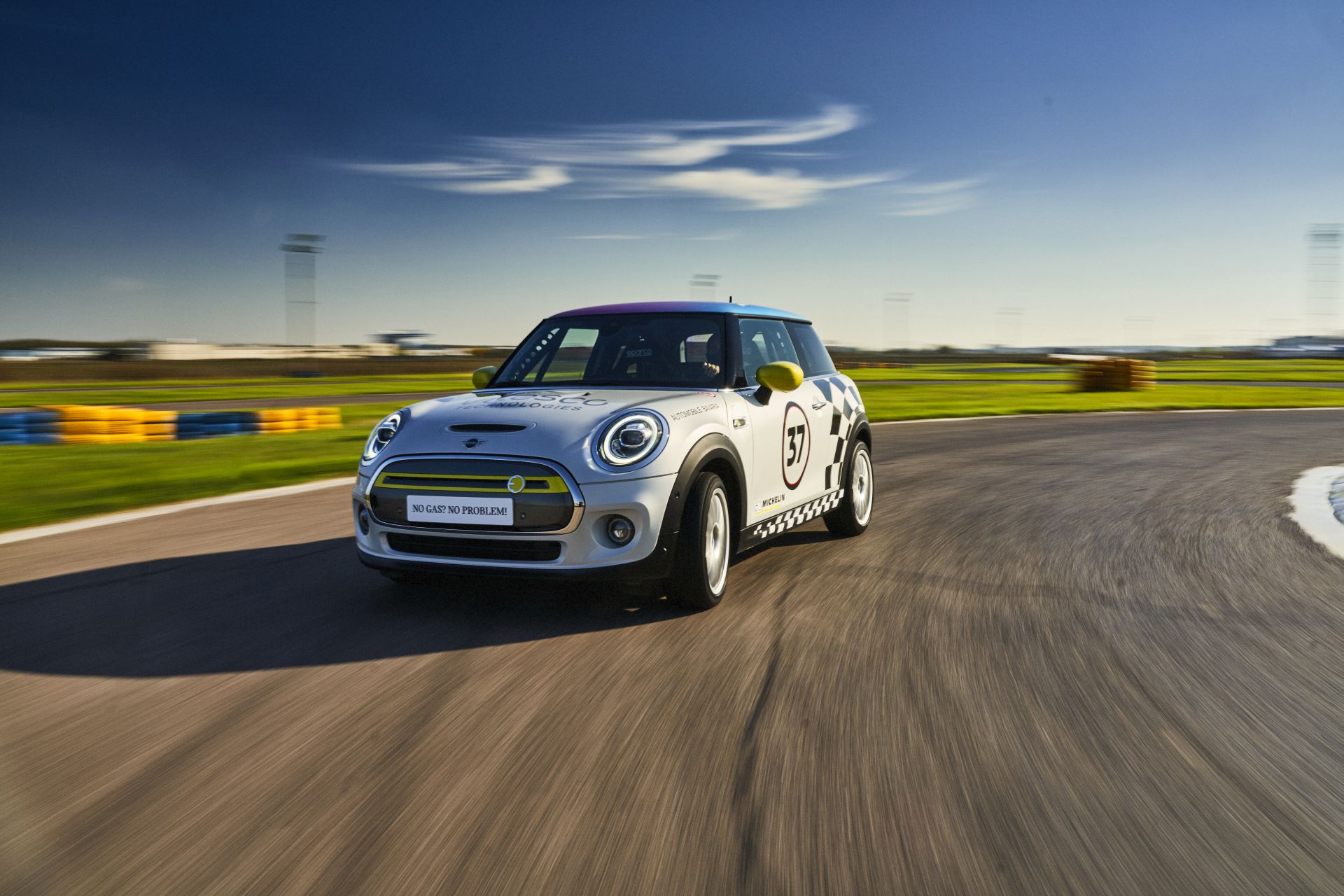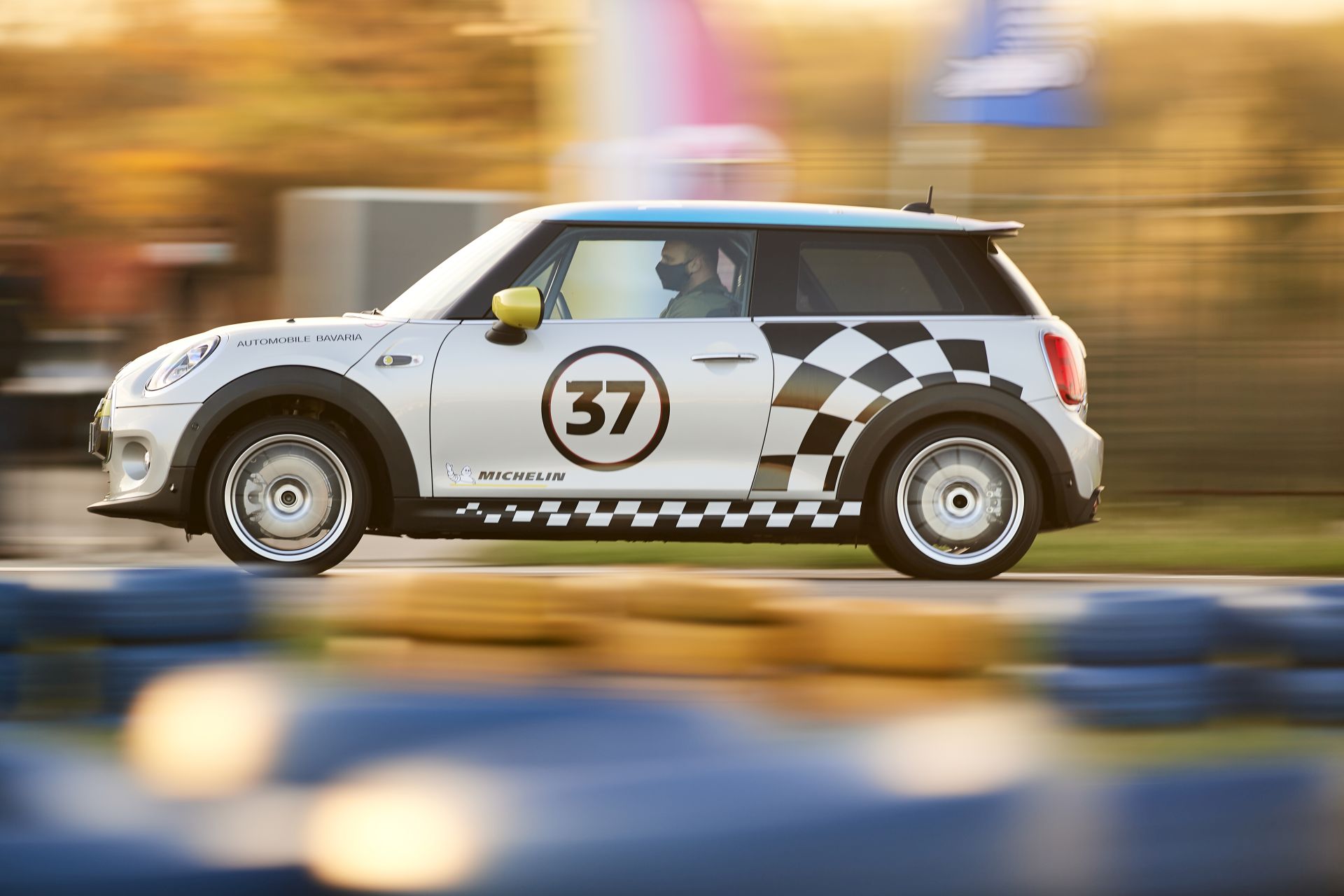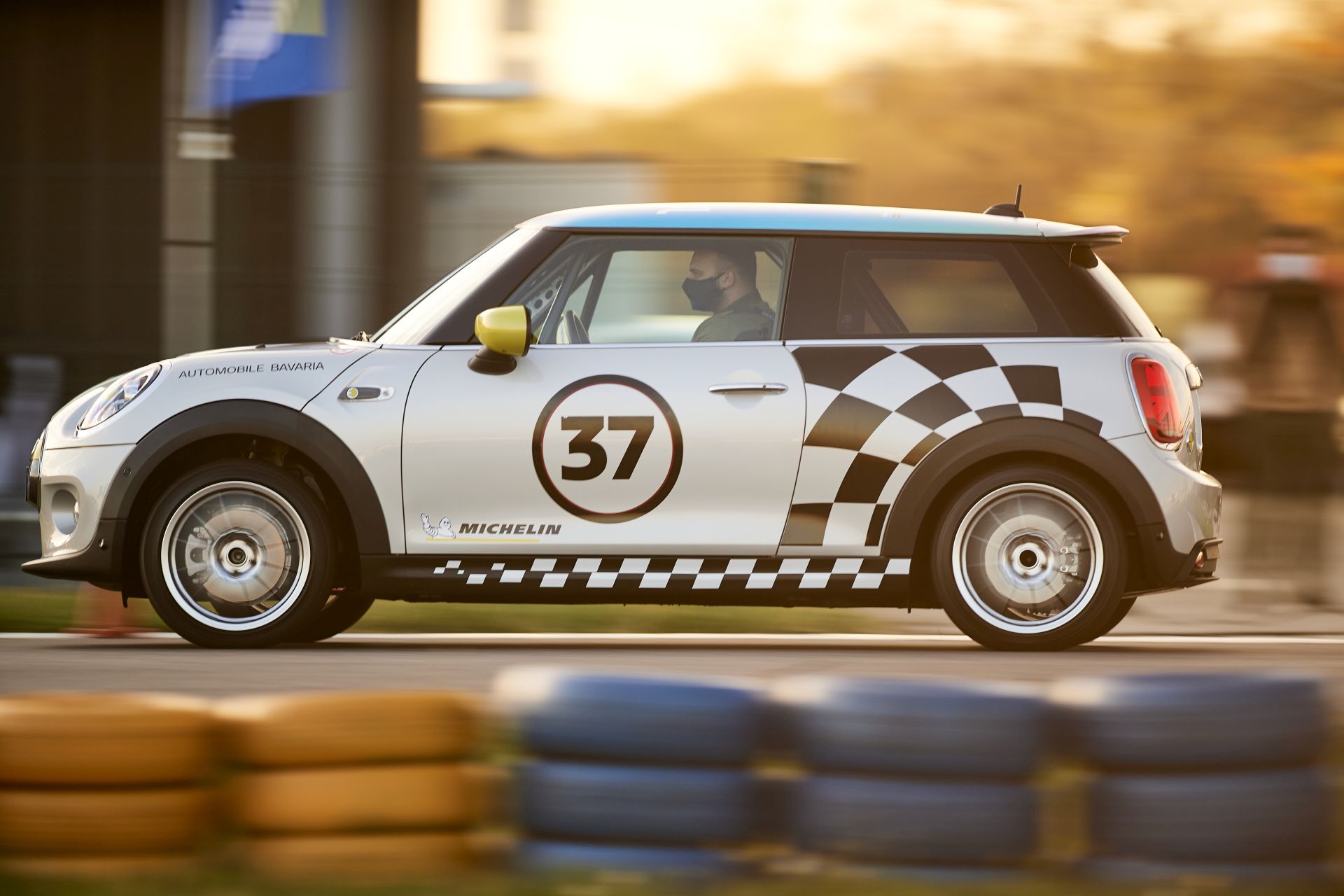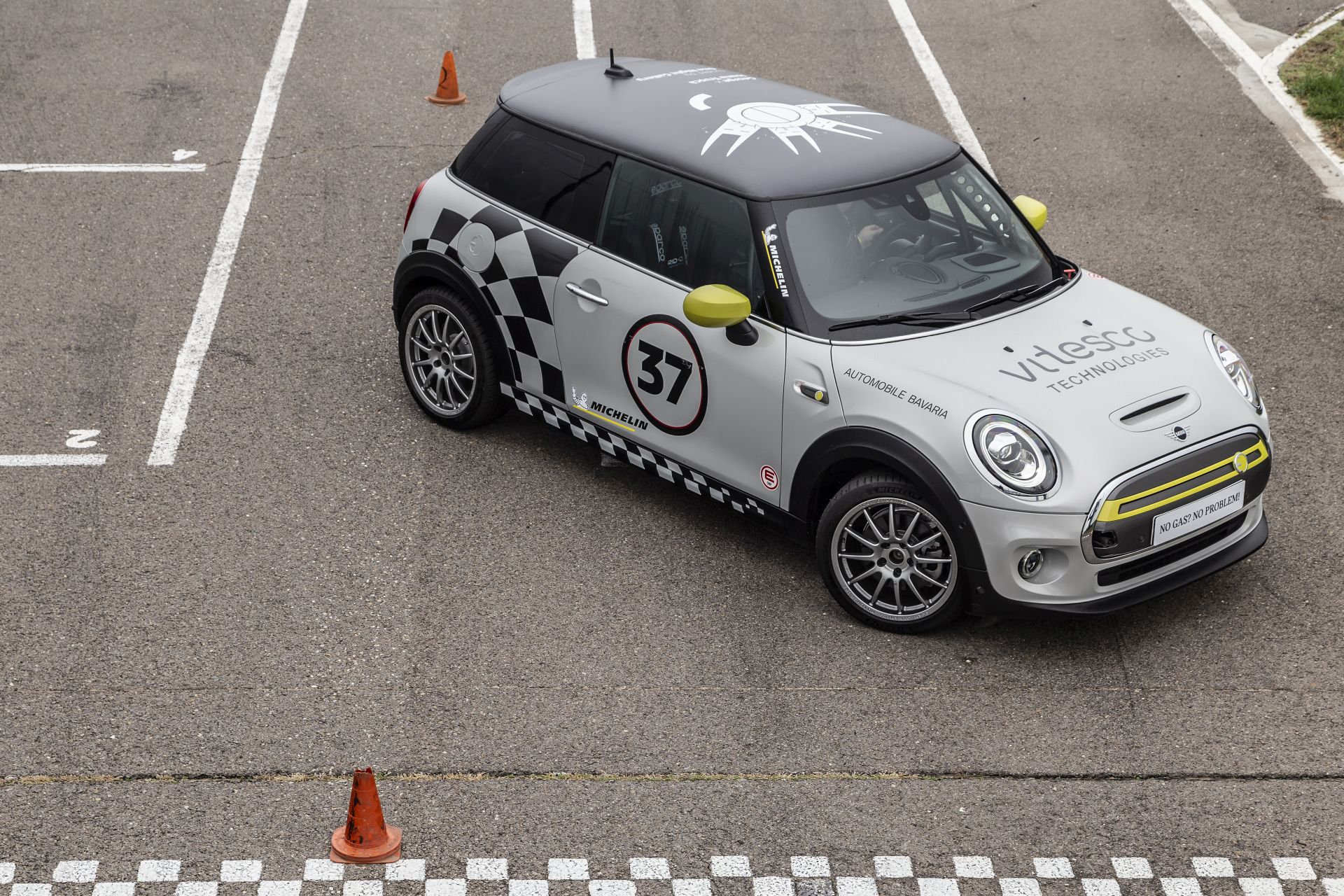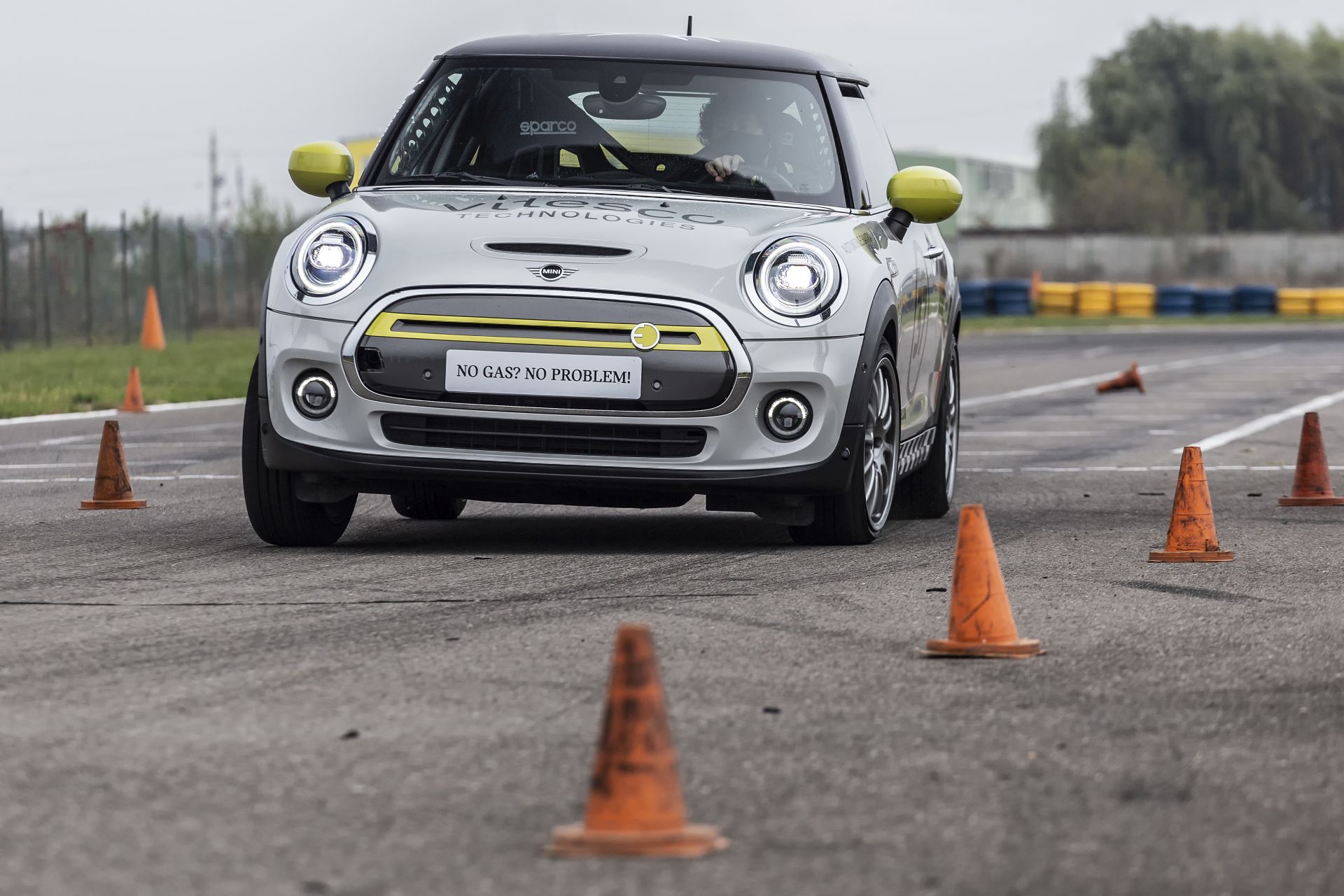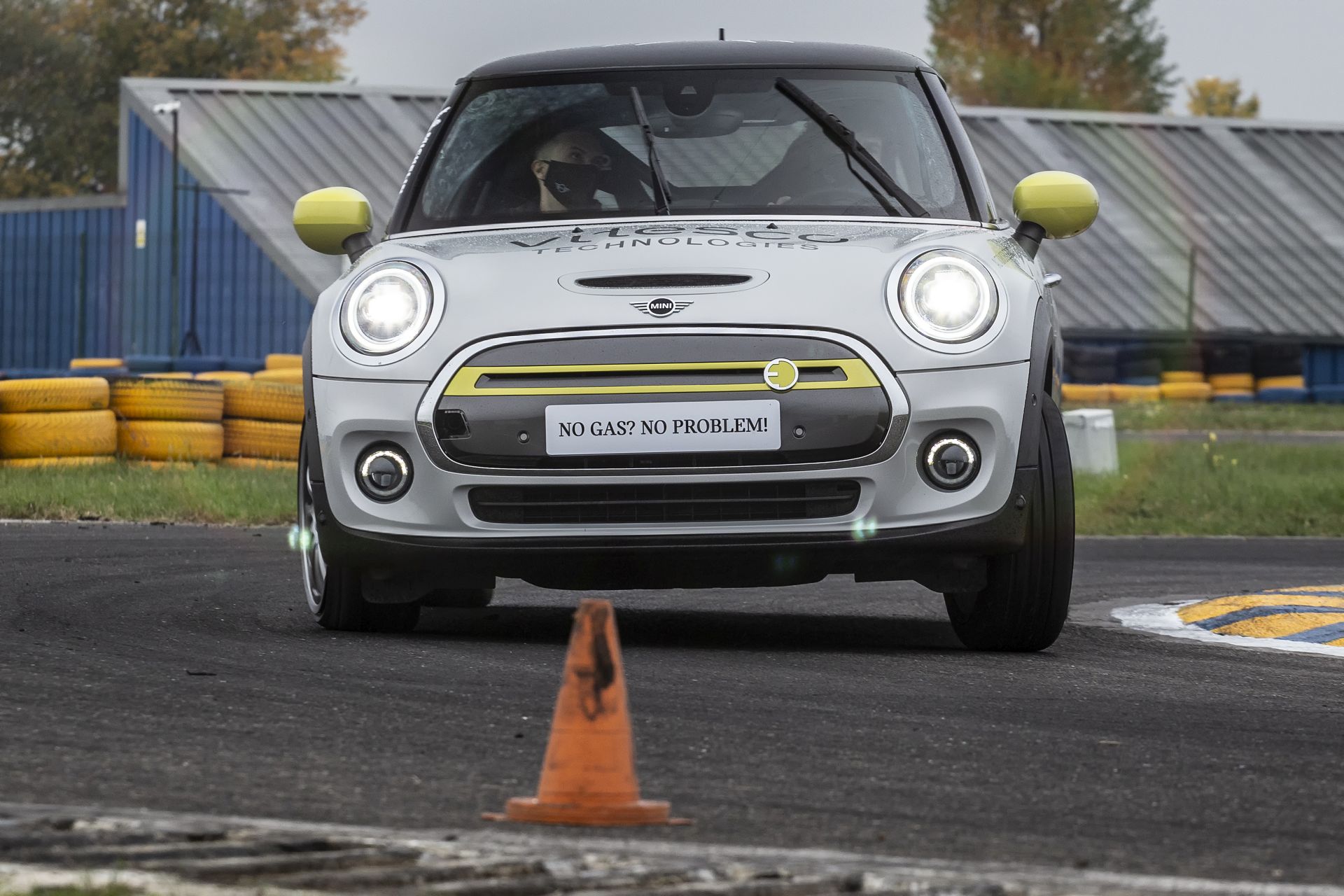We reported a few months ago on a world premiere centered around the first MINI Electric racing car. We’ve seen electric racers before, including at Pike’s Peak, but despite MINI’s racing heritage, nothing came from the Oxford-based company through official lines. Until now. This is MIMI, the world’s first electric racing MINI and while I wish I could tell you it’s a stunner and a world-record holder, for now it’s just a prototype based on a pre-production model.
The car is in its incipient stages right now, developed in Romania by the local arm of the BMW Group in collaboration with some truly dedicated partners. The one that stands out the most is Vitesco Technologies, a Continental sub-branch specialized in developing electric drivetrains. Their expertise covers all sorts of electric power, from conventional BEVs to fuel-cell alternatives and so on. Therefore, they have been tasked with making sure this MINI drives at its maximum potential, all the time.
And that’s the first hiccup the car encountered on its road to greatness. The MINI electric, as we all know by now, uses an electric powertrain shared with the BMW i3 S. The electric motor is the same while the battery pack uses different cells, provided by CATL instead of Samsung. This setup is mighty capable in day-to-day usage around town but when you’re trying to push this car to the absolute limit for extended periods of time, some limitations are bound to occur. The biggest problem the guys need to solve right now is battery overheating.
They hit this bump while running in their first couple of rallying events this year. In the first half of the stage, the car would perform admirably, posting good numbers, rivaling conventional rally cars. However, after a certain threshold, it would enter limp mode, to protect its batteries from overheating and eventually bursting into flames. Getting around that issue might be trickier than you think.
That’s because the MINI Electric, much like any other electric car on the market today, has an AC system that does two things: it is tasked with cooling or heating the cabin and the battery enclosure. Basically, modern-day electric cars have battery enclosures that are temperature regulated, in order to keep the cells operating at the optimum levels all the time, in all sorts of weather. While some cars have two circuits for these tasks (one for cabin climate control and one for the batteries) in the case of the MINI, this system is intertwined. Therefore, getting to cool off the batteries with a better AC system is going to be tricky.
Once that issue is solved, provided the battery temperature will be kept in check without entering limp mode towards the end of the race, the people behind this project assume they will be able to provide competitive times with the stock 184-HP motor. Of course, that’s not all that’s going to change in the end.
Right now, the car has had all of its interior stripped to save weight. They even removed the tailgate wiper to save some valuable milligrams off the car’s total weight and managed to cut some 150 kilos. On a car that used to weigh almost 1,500 kilos in the first place, that’s a 10 percent difference. A roll-cage was also installed, to make it racing-compliant as well as bucket seats for the pilot and co-pilot. Other changes right now include a set of MINI Challenge wheels that are lighter than the originals and a set of Michelin Pilot Sport 4S tires, provided by the French company, which is also a sponsor.
That’s about it for now and I have to say, as little as the car has been modified so far, the difference compared to the standard model is noticeable. I was invited to a nearby track to test things out and I walked away impressed. The location was a karting track of all things which made it even trickier to navigate as it was narrower and a lot more technical than a regular track. And yet, MIMI performed admirably.
There’s ample front-end grip and for that we need to acknowledge the Michelin rubber (which will be replaced in the future with proper slicks). Then again, karting tracks do have a more rugged type of asphalt which increases grip but also chews through tires faster. Nevertheless, since I wasn’t paying for them, I pushed the car to its absolute limit. There’s still some noticeable body lean, despite the weight the car lost but I was told that’s going to be solved in the future as a new suspension setup is already in the works.
Other than the lean in corners, I also noticed the improved stiffness of the whole chassis, thanks to the roll-cage installed inside. The car now has a big tendency to swivel on its front wheels, making the rear end extremely playful. Chip in the instant torque and the rather impressive standard brakes and you get a recipe for immense levels of fun on the track, even a smaller and more technical one like this. Is it a proper rally car yet? No. But there’s a lot of potential here and we can’t wait to see how the project develops.


